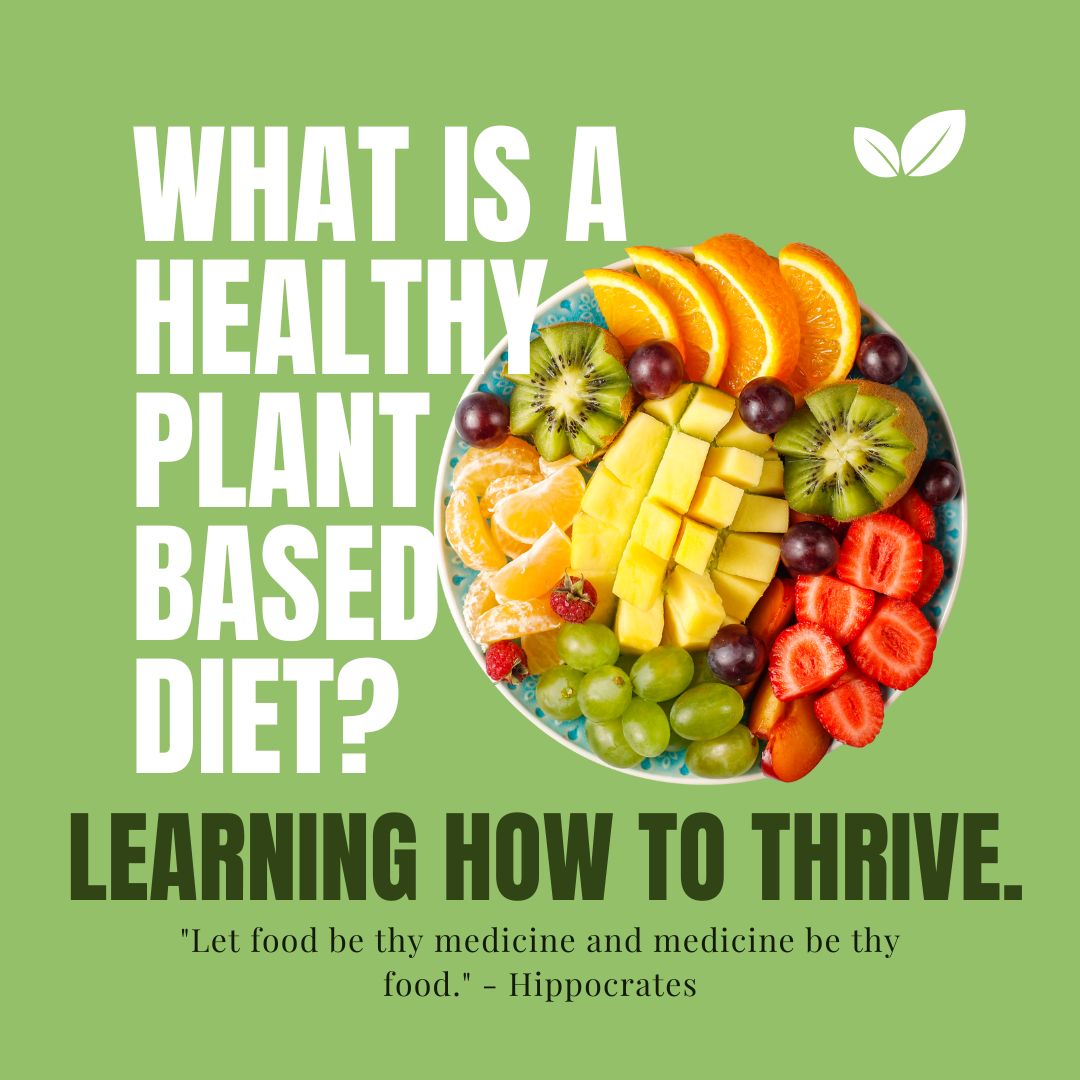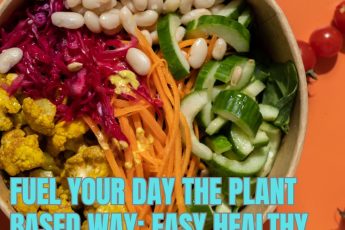Have you been curious about plant-based eating but unsure where to start? You’re not alone! Plant-based diets are gaining popularity due to their health benefits and environmental impact, and many people are asking what is a healthy plant-based diet. But with so much information out there, it can be confusing to figure out what is a healthy plant-based diet and how to incorporate it. It’s worth noting that this article is meant to provide helpful information and personal experiences, but always consult a healthcare provider or registered dietitian for personalized advice.
What is a Healthy Plant-Based Diet?
At its core, a healthy plant-based diet centers on whole, unprocessed foods derived from plants. This includes fruits, vegetables, whole grains, legumes (beans, lentils), nuts, and seeds. The key to a healthy plant-based diet is variety. By incorporating a wide range of colorful fruits and vegetables, you ensure you’re getting a good mix of essential vitamins, minerals, and fiber. Whole grains like brown rice or quinoa provide sustained energy, while legumes and nuts offer protein and healthy fats that keep you feeling full.
What is a Whole Foods Plant-Based Diet?
A whole-foods plant-based diet prioritizes unprocessed or minimally processed plant foods like fruits, vegetables, whole grains, legumes (beans, lentils), nuts, and seeds. Unlike some vegetarian or vegan diets that may incorporate processed meat alternatives or sugary drinks, a whole-foods approach focuses on getting nutrients from their closest-to-nature state. This means choosing brown rice over white rice, opting for fresh fruit over juice, and enjoying a handful of almonds over a bag of veggie chips. By keeping it whole and plant-based, you ensure you’re getting the most out of your food while minimizing added sugars, unhealthy fats, and unnecessary sodium. Our favorite resource for a whole-foods plant-based diet, commonly known as WFPB, is FORKS OVER KNIVES. We find their approach to this healthy eating style reasonable and achievable. Here are suggestions for their core foods:
- Vegetables: kale, spinach, broccoli
- Fruit: blueberries, raspberries, blackberries
- Tubers & Starchy Vegetables: potatoes, corn, peas, winter squash
- Whole Grains: quinoa, brown rice, oats
- Legumes: lentils, chickpeas, black beans
- Nuts and seeds: almonds, chia seeds, flaxseed
Things to Consider When Eating a Whole-Foods Plant-Based Diet
While a whole-foods, plant-based diet offers many benefits, there are also a few things to keep in mind to make it work for you:
- Nutrient Awareness: Certain nutrients like vitamin B12, iron, and calcium are more readily absorbed from animal sources. But with a little planning, it’s easy to meet your needs! Fortified plant-based milks, leafy greens, nuts, seeds, and legumes can provide essential nutrients, and supplements are available if needed.
- Planning and Preparation: Making balanced and delicious plant-based meals can take some extra planning compared to quick grab-and-go options. But once you get the hang of meal prepping and trying new recipes, it becomes second nature.
- Budget-Friendly Choices: While some specialty plant-based products can be pricey, many staples like beans, rice, oats, and seasonal produce are incredibly affordable. Planning your grocery list and shopping strategically can help you save money while still enjoying a variety of delicious, nutrient-packed meals.
With a little research and preparation, a whole-foods plant-based diet can be an enjoyable and sustainable way to eat!
Can You Swap a Plant-Based Food for a Traditional Food?
Yes! Incorporating PLANT-BASED SWAPS can make the transition easier and keep your meals exciting. These swaps help maintain familiar flavors and textures while keeping meals plant-based. Here are some easy and delicious alternatives:
✅ Simple Plant-Based Swaps
- Dairy → Unsweetened almond or oat milk
- Ground beef → Lentils or crumbled tofu
- Cheese → Nutritional yeast or cashew-based cheeses
- Eggs (in baking) → Flax or chia egg
- Butter → Mashed avocado or plant-based butter option
- Mayonnaise → Hummus or tahini
A great way to experiment with plant-based swaps is to try one or two at a time and find what works best for you!
Thriving on a Plant-Based Lifestyle
In addition to figuring out what is a healthy plant-based diet, transitioning to plant-based can be an exciting journey toward a healthier you. Here are some key tips to help you thrive:
- Focus on whole foods when you can: Fill your plate with fresh produce, whole grains, and legumes. Don’t be afraid to experiment with new fruits and vegetables you haven’t tried before!
- Don’t fear healthy fats: Avocados, nuts, and seeds are great sources of healthy fats that keep you feeling full and provide essential nutrients. A small drizzle of olive oil for cooking (or if you follow the WFPB diet, a drizzle of vegetable broth) or a sprinkle of chia seeds on your oatmeal can add flavor and nutrition.
- Learn about plant-based proteins: Beans, lentils, tofu, tempeh, and seitan are all excellent sources of protein. Try making HEARTY LENTIL SOUP, VEGGIE CHICKPEA TIKKA MASALA, or MEDITERRANEAN SWEET POTATOES to keep your meals satisfying and balanced.
- Explore new cuisines: Many cultures have delicious plant-based traditions to discover. Indian curries, Thai stir-fries, and Ethiopian stews are packed with flavor and often naturally vegan.
- Find your community: You’re not the only one asking, “what is a healthy plant-based diet?” Connecting with others who share your dietary goals can provide support and inspiration. Join online forums, Facebook Groups, or even take a plant-based cooking class.
Quick & Easy Plant-Based Meal Idea
To help you get started, here’s a simple and delicious plant-based meal you can whip up in under 10 minutes:
🥑 Avocado Chickpea Toast 🥑
Ingredients:
- 1 slice whole-grain bread
- ½ avocado, mashed
- ¼ cup chickpeas, smashed
- 1 tsp lemon juice
- Salt, pepper, and red pepper flakes to taste
Instructions:
- Toast the bread.
- In a small bowl, mix the mashed avocado and chickpeas with lemon juice, salt, and pepper.
- Spread over the toast and sprinkle with red pepper flakes.
- Enjoy as a quick breakfast or lunch!
A healthy plant-based diet is all about variety, balance, and enjoyment. When asking, “what is a healthy plant-based diet?” remember that it’s not about deprivation—it’s about filling your plate with delicious and nutritious foods that nourish both your body and taste buds.






